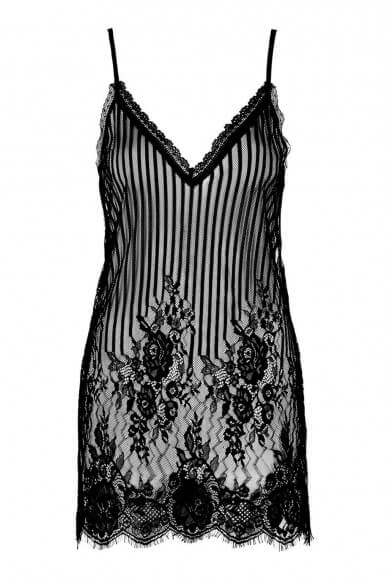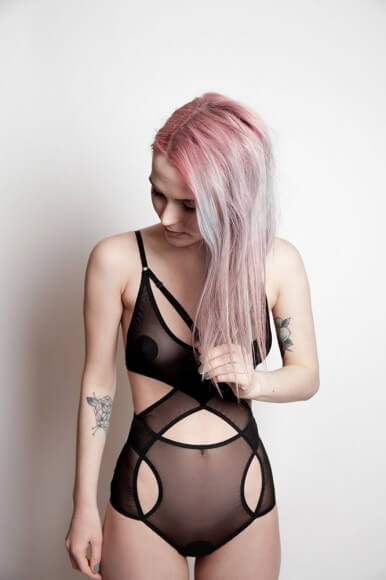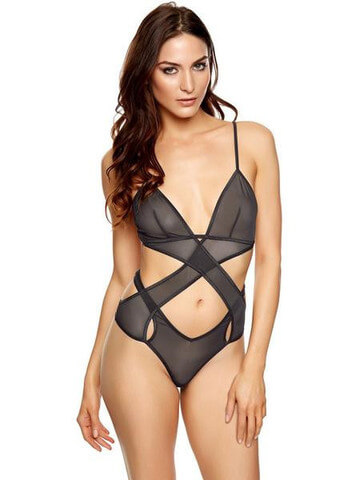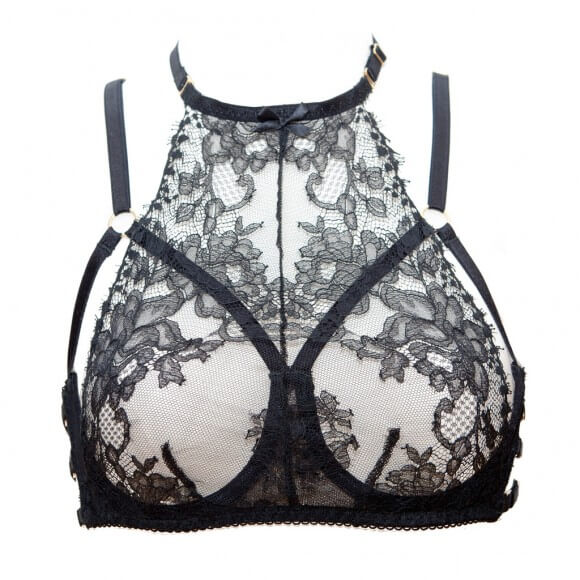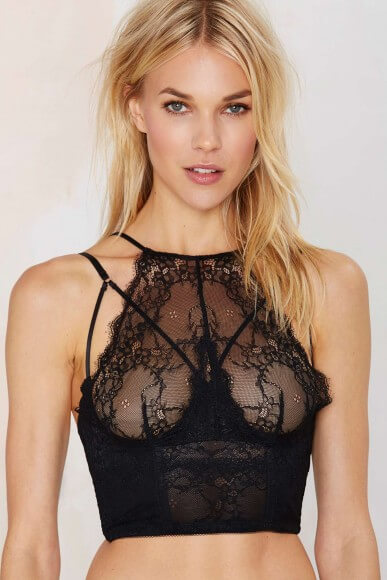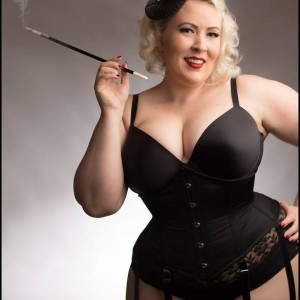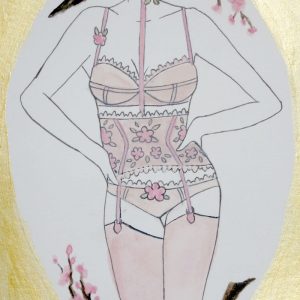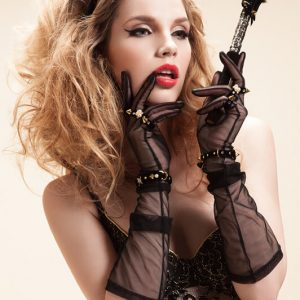What Does Copying Mean For Independent Lingerie Designers?
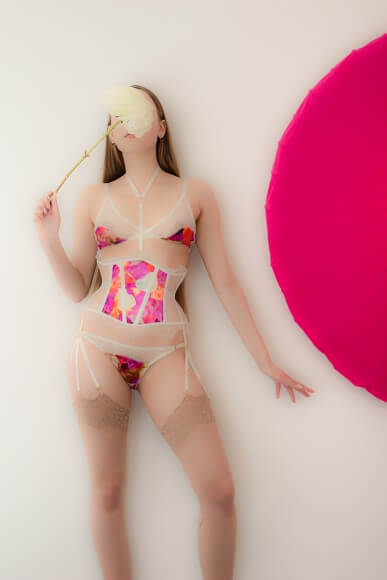
The Rosaline set by Karolina Laskowska. The inspiration for this piece came directly from a 1920s bra style. Many of the apparently 'modern' strappy design details can be traced back to vintage pieces.
I hold the firm but controversial belief that no design is truly original. At least not in the world of lingerie: designers don’t live in a vacuum and they all face influences, whether it’s consciously or not. Inspiration can come from almost any source, be it the haute couture catwalks or historical costume. More often than you’d expect, it’s purely a matter of zeitgeist that sees a swathe of labels simultaneously release collections with parallel design details.
However, the line between inspiration and copying is a fine one. Yet that line definitely exists, as much as where it lies can be argued. This can become especially convoluted within the lingerie world. Lingerie must perform a certain number of set functions on the body and consequently can only be modified within certain limitations. Wired bras must always adhere to the same basic shape, otherwise they will no longer work on the human body. Similar principals can be applied to other areas of lingerie, be that panties or slips.
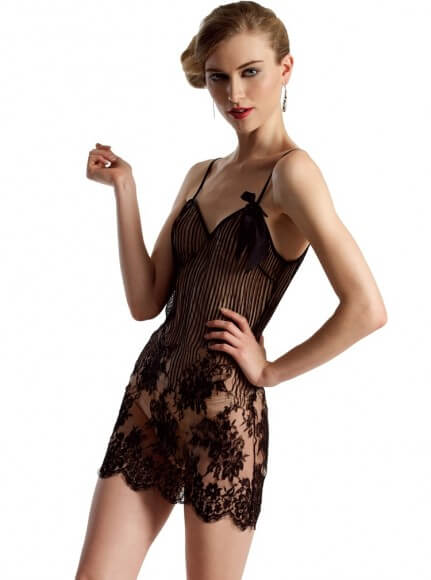
Angela Friedman's 'Dentelle' slip uses a beautifully delicate French lace with silk details. It retails for $325 and is handmade in the USA.
Consequently, lingerie faces more design limitations than the wider world of fashion. This means that there’s a lot less scope for ‘originality’ for the designers. Nevertheless, brands still clearly develop design signatures, be that particular choices of materials or silhouettes. That means that knock offs are a definite possibility, albeit it’s a little more difficult to define what that entails exactly.
The fast fashion industry has grown monumentally over recent years; there is huge consumer desire for low-priced clothing. Of the many unfortunate side effects of fast fashion its constant demand for new styles. Within the last century, the speed of fashion has gone into overdrive: where trends were once changed every few years, now some retailers drop new collections on a weekly basis, as For Love And Lemons indicate on their home page.
A consequence of this constant drive for newness means that corporate design teams are constantly on the lookout for new designs. The breakneck speed means there is simply no time to design anything vaguely original: it is much more economically sound to either recycle old designs or to simply lift them from other designers. More often than not, the designers that corporations look to for their design ideas are the independent ones.
There’s a whole side to the fashion industry that is almost completely hidden from the view of consumers: trend prediction. The premise of trend prediction is the creation of a ‘package’ for brands that concisely dictates the trends for the future fashion seasons. Access to these packages is seemingly reserved for the large corporations of the fashion world, with basic membership often starting at around $14,000.
Trends were once derived largely from the high-end and couture catwalks, as a method of translating these opulent and costly creations into something much more easily accessible for the average consumer. Unfortunately, there’s been a definite shift in the intimates department of trend prediction. Whereas in areas like womenswear much is still influenced by big name catwalks, the lingerie trend packages seem to focus almost exclusively on independent designers. What this essentially means is that independent designers have to eat all the costs and energy in producing these designs, only for large name corporations to reap the benefits of them and copy them for huge profits.
It’s particularly poignant to consider the hurt this can cause to independent designers when you note that they are the ones taking any kind of major design risks. Mass produced fashion will always stay relatively ‘safe’ as there’s too much risk to their profit margins to do otherwise. Independent designers run their businesses on a tiny scale compared to that of major retailers. In lingerie, it’s pretty common for an indie brand to only have one person behind it: usually a woman who pours vast amounts of their personal money, heart and soul into the brand. These are people who don’t turn over vast profits but do what they do out of love or necessity. In the words of Gaby of Hopeless Lingerie: ‘As someone who has personally experienced on numerous occasions just what it feels like to see crappy rip offs of your designs mass produced, it’s incredibly damaging mentally. Knowing that those businesses are making a lot of money from my ideas, while I continually struggle to make ends meat… that’s really tough to deal with.’
One of the main ‘pro-copying’ arguments that often crops up is that the ripped off designer doesn’t actually suffer financially, because the end target customer is totally different. This is usually true. A customer who purchases my $240 French lace ‘Daniela’ bra is unlikely to be the same person who hands over $68 for Nastygal’s ‘Pour Vous’ bustier. Unfortunately, this fact doesn’t erase the hurt a designer can feel at seeing their own work so heavily referenced. In my personal experience as a designer, you eventually reach the point of forcing yourself not to care anymore because it just uses up to much energy. Kiss Me Deadly are a brand whose mainstay is vintage recreations so they rarely face this copying issue, yet for founder Catherine Clavering it doesn’t mean that this practice is acceptable: ‘I don't think copying by big industry names harms small brands sales; the customers just don't overlap. But it's an absolute ****** if you're someone who is a creative driving force and the big brands are just using you for inspiration rather than going to you and paying for your talents to design a line for them. If I were more creative that would be what got me spitting teeth.’
Lingerie design at an independent level can have a lot of emotion involved. So much work has to go into creation that it’s inevitable that the designer will develop some level of attachment to them. Sadly, there’s little recourse for these designers in the cases that they are copied. On a legal level, most small brands are simply unable to afford representation. Fashion copyright can be tenuous at best and in some countries simply doesn’t exist.
It’s a state of affairs that gets a lot of lingerie lovers metaphorically marching with pitchforks. It is decidedly unfair to see small labels continue mined for their design work with no form of compensation. It’s unlikely that we’ll see the end of this practice without our lifetimes but fortunately it’s not all doom and gloom! It’s easier than ever to access independent design, with the level of choice in sizes, designs and price points growing at an exponential rate. If you buy from an indie label, you are supporting that designer directly, which gives them scope to grow and to continue creating the things that you love. Whilst corporate fashion isn't going to relinquish its grip on the industry there's at least the silver lining that independents are giving customers another option, however small scale that may be.
Readers: How do you feel about copying within fashion? Would you ever purchase a knock-off?





